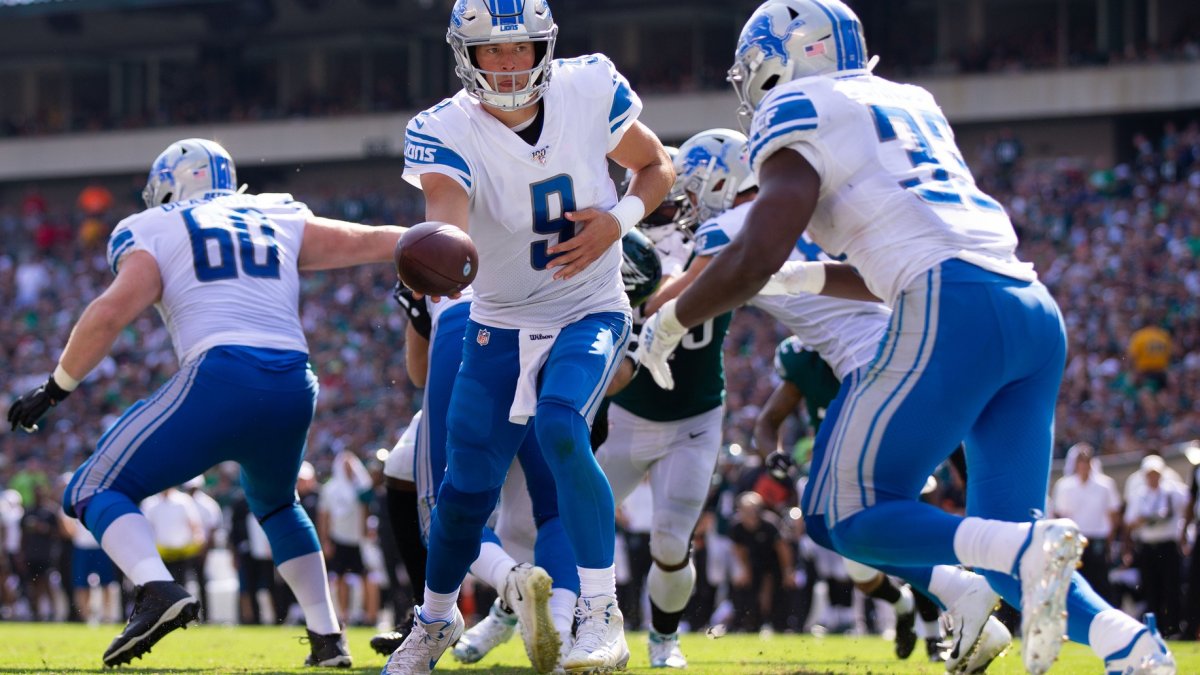The last few weeks, I’ve been digging through early offseason best ball ADP data to find players whose values have shifted the most through free agency, how 2020 prospects are viewed versus past classes and the differences in positional rankings between our projections and market sentiment. In this series of articles, I’m going to explore the relationship between ADPs and projections — and what it tells us about the likelihood that a team will upgrade at running back in the draft. My earlier piece on wide receivers can be found here, and this article goes into the opportunity for rookie running backs.
The implied rushing and receiving production for running backs based on their collective ADPs should be roughly equal to the total output for the backfield in our projections. Assuming the single backfield projection is more accurate than those for a collection of running backs, large differences in projections can mean a couple things: Current running backs are misvalued, or there is an underlying assumption that the team will add additional running backs in the draft.
[Find a full collection of analysis and insights on PFF's 2020 fantasy football projections for all 32 NFL teams. Check back as more articles will be added each day.]
It’s the second of those conclusions I’m exploring in this piece, using ADP to find teams with weaker collective backfield ADP than those of our projections, and thereby identifying which teams have the most opportunity for rookie additions at running back. In addition to mismatched value, I’ll also be using a concept that originated in economics that Football Perspective’s Chase Stuart applied to receiving shares called the concentration index.
The final metric for judging rookie running back opportunity — each team’s opportunity score — combines the mismatches in projections for team backfields and ADP implied numbers for running backs with the concentration indexes, where less concentrated carries among current running backs means more opportunity.
CONCENTRATION INDEX
In this analysis, I’m using the concentration index to measure how much top running backs on a team dominant the share of carries. The theory being the less dominant the top running back share projections, the more room there is for a new rookie to steal share from weaker competitors.
The concentration index quantifies the degree of concentration by squaring shares and then adding them together. In a simple example, if a single running back got 100% (of a ratio of 1) of the carries and the rest zero, the squared sum of the target ratios is one, the highest possible concentration index. If another team spread out the ball equally to four running backs at 25% of targets (0.25 ratio), the squared sum of the ratios is 0.25.
Below are our projected target shares for the top three running backs on the team with the highest carry concentrations in the NFL. In this table, the “Concentration” is the squared sums of the running back shares multiplied by 100.
| Team | RB1 Share | RB2 Share | RB3 Share | Concentration |
| Panthers | 78.3% | 12.7% | 5.0% | 63.3 |
| Titans | 77.9% | 14.1% | 8.0% | 63.3 |
| Bengals | 77.1% | 14.7% | 6.0% | 62.0 |
| Texans | 74.1% | 25.9% | 0.0% | 61.7 |
| Giants | 76.0% | 16.5% | 5.4% | 60.8 |
Exclusive content for premium subscribers

WANT TO KEEP READING?
Dominate Fantasy Football & Betting with AI-Powered Data & Tools Trusted By All 32 Teams
Already have a subscription? Log in



 © 2025 PFF - all rights reserved.
© 2025 PFF - all rights reserved.